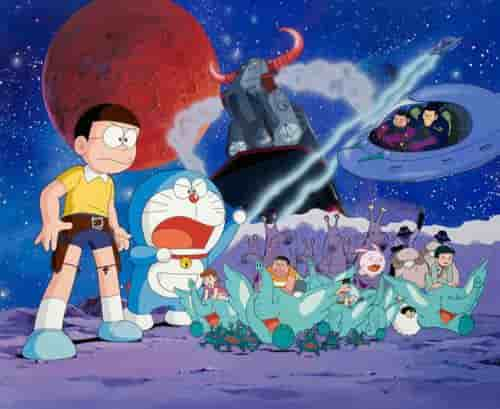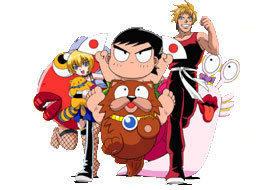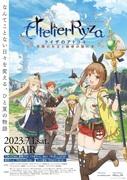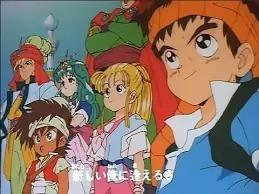Doraemon the Movie "Nobita's Space Adventure" Review: A moving story of space adventure and friendship

Doraemon the Movie: Nobita's Space Exploration Chronicle - A moving and adventurous space exploration storyDoraemon the Movie: Nobita's Space Adventure, released on March 14, 1981, is the second film in the Doraemon theatrical series and the second in the feature-length series. It is based on the original story by Fujiko F. Fujio and was directed by Nishimaki Hideo and produced by Shin-Ei Animation, Shogakukan, and TV Asahi. It was distributed by Toho, has an Eirin rating of 110281, is 90 minutes long, and consists of one episode. The copyright is owned by Fujiko Productions, Shogakukan, TV Asahi, Shin-Ei, and ADK. storyThe story begins when Nobita's room and Roppuru's spaceship are connected by a twist in hyperspace. Koyakoya Planet, where Roppuru lives, is a pioneer planet far from Earth, blessed with nature and full of mysterious creatures. There, Nobita and Roppuru become friends and have fun playing together. However, Galtite Mining is targeting Koyakoya Planet. In order to protect Roppuru and Koyakoya Planet, Doraemon, Nobita and his friends must fight the enemy. castDoraemon is played by Nobuyo Oyama, Nobita by Noriko Obara, Shizuka by Michiko Nomura, Gian by Kazuya Tatekabe, Suneo by Kaneta Kimotsuki, and Roppuru by Masako Sugaya. These voice actors express the individuality of the characters richly and add depth to the story. Main StaffThe screenplay was written by Fujiko F. Fujio, the animation director was Sadayoshi Tominaga, the layout was Yoshio Kabashima, the art director was Seihei Kawamoto, the cinematographers were Akira Koike and Akihiko Takahashi, the sound directors were Yasuo Urakami and Akira Okuma, the music was Shunsuke Kikuchi, the supervisor was Daikichirou Kusube, and the producer was Soichi Bekshi. Thanks to the cooperation of these staff members, the film was completed with high quality. Main CharactersDoraemon is a cat-shaped robot from the 22nd century, who was sent to the present day by Nobita's great-grandson Sewashi in a time machine to help the lazy and crybaby Nobita. He pulls out a lot of secret gadgets from the fourth-dimensional pocket on his stomach. His favorite food is dorayaki, and he hates mice. Nobita is a boy who is not good at both studying and sports, but he has a bright personality and a caring heart. He has a talent for cat's cradle, shooting, and napping that no one can beat. He loves Shizuka and wants her to become his future wife. Shizuka is Nobita's classmate. She is beautiful and smart, so she is popular in class. She has a strong sense of purpose and hates crooked things. She is learning piano and violin, but her violin skills may not be that great. Gian is a strong, violent, but very reliable bully. His dream is to become a singer, but he has an incredibly bad voice and is tone-deaf. He causes trouble for his friends when he performs at a concert in a vacant lot. Suneo's father is a company president, so his family is very wealthy. He often brags about his wealth, making Nobita jealous. He tries to please Gian, and he also has a mother-boy side. His dream is to become a fashion designer. Appeal and evaluation of the film"Nobita's Space Pioneer Chronicle" is highly regarded as one of the Doraemon series' most well-known stories of adventure and friendship. The beautiful nature and strange creatures of the planet Koyakoya are not only visually appealing, but also play an important role as the backdrop to the story. The battle against Galtite mining also encourages children to think about environmental protection and resource issues. The characters' growth is also an important point. Nobita's courage and faith in friendship in particular create a touching scene at the climax of the story. There are many scenes that use Doraemon's secret gadgets, and the film is full of elements that stimulate children's imaginations. The music is also an important element in enhancing the film's appeal. Shunsuke Kikuchi's music effectively conveys the thrill of adventure and the warmth of friendship, playing a key role in elevating the viewer's emotions. Recommended pointsThis movie is enjoyable for both children and adults. In particular, the following points are reasons why I recommend it:
summaryThe Doraemon movie "Nobita and the Space Pioneers" is a moving story about adventure and friendship, with beautiful visuals, music, and character development. It is a work that can be enjoyed by children and adults alike, and is likely to raise awareness of environmental issues in particular. We hope that by watching this movie, you will be touched by the adventures and friendship of Nobita and his friends, and feel inspired and inspired. |
<<: Ikkyu-san: Spring! Naughty Princess - Review of the charming characters and story
>>: Mobile Suit Gundam: Reevaluating the pinnacle of realistic robot anime
Recommend
The Appeal and Evaluation of Arion: Reassessing the Legendary Adventure
"Arion": A magnificent story based on G...
The latest trailer of the movie "The Mafia and the Family" is released and will be released on January 29, 2021
The new movie "Yakuza and Family", whic...
"Suimi-bune" review: A moving story and beautiful images
The appeal and historical background of the "...
New Snow White actress responds to controversy: I'm excited to be a Latin princess
Since Disney officially announced that the live-a...
Marvel's new dramas "Moon Knight", "She-Hulk" and "Ms. Marvel" released trailers
At the Disney+ Day event, Marvel announced that a...
Bandai is considering the future of Toru Furuya's transformation into "Amuro"
Voice actor Toru Furuya is a household name for h...
Yakko no Takohei: The appeal and evaluation of the powerful companion character
His takobee companion is strong - Yakkonotakobee ...
The appeal and reviews of ONE: Towards a Shining Season: A thorough explanation of the moving story and the depth of the characters
ONE: Towards a Shining Season: A story of eternal...
Edo Never Sleeps! - What is the appeal of this anime that combines history and humor?
"Edo Can't Sleep!" - An OVA that co...
Dilireba and Wu Lei star in the comic adaptation drama "The Long Ballad" and the first trailer is released. Tencent Video exclusively broadcasts
The comic-adapted costume historical legendary dr...
"Machikado Mazokumini" review: What is the appeal of the new magic?
"Machikado Mazokumini" - The fascinatin...
A thorough review of GLOBARANGE's product promotional animation! What is the appeal that you can't miss?
Detailed evaluation and recommendation of GLOBARA...
"The Girl with Dark Eyes": A combination of fascinating characters and a moving story
"The Girl with Black Eyes" - A masterpi...
The latest PV and new concept scenes of the domestic animation "The Three-Body Problem" are released
At the B station's National Animation Confere...
Original TV animation "The Beast of Arus" releases key visual and new cast
The official website of the original animation &q...









